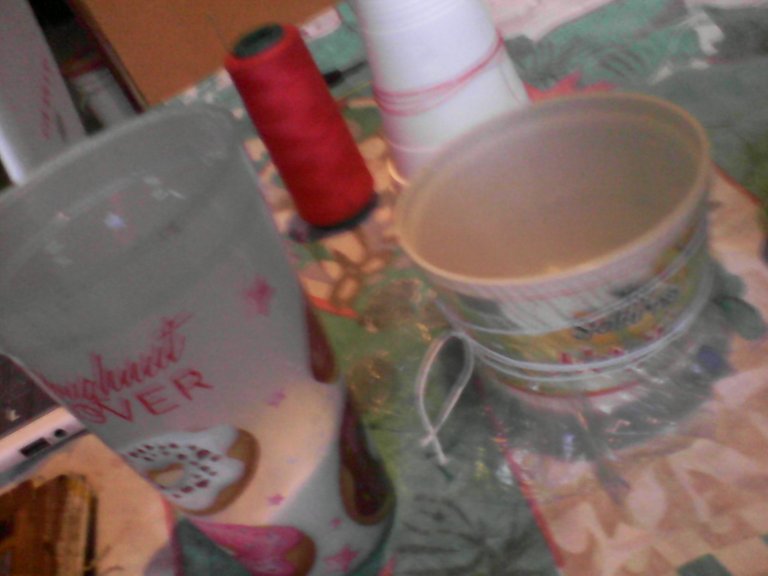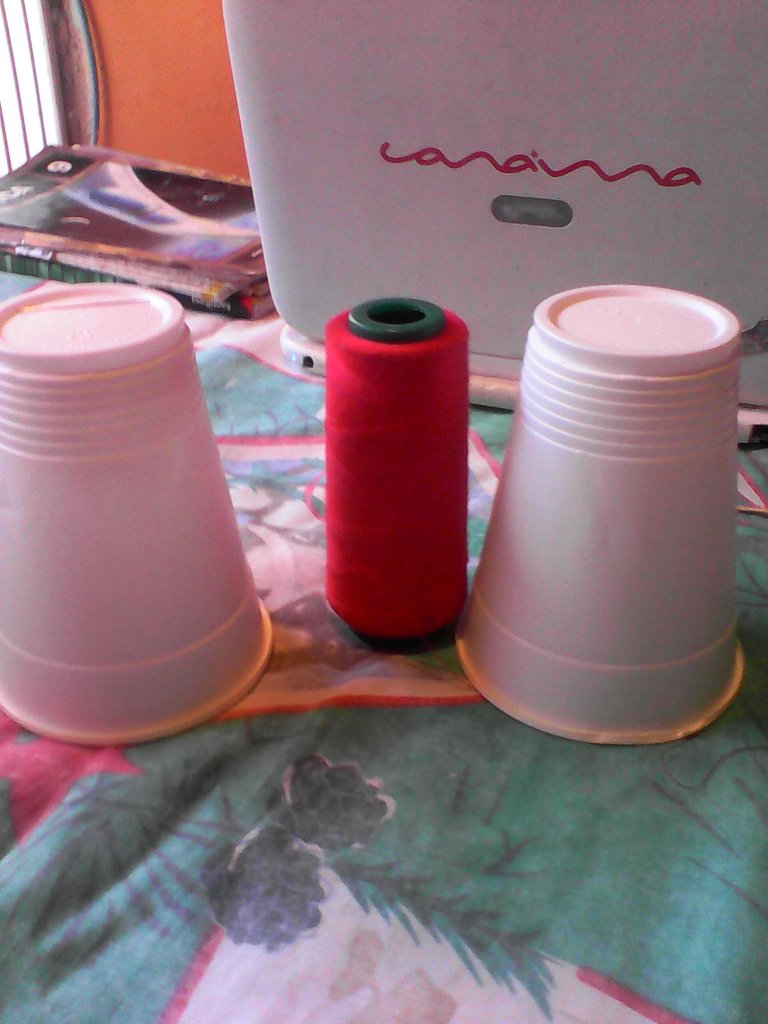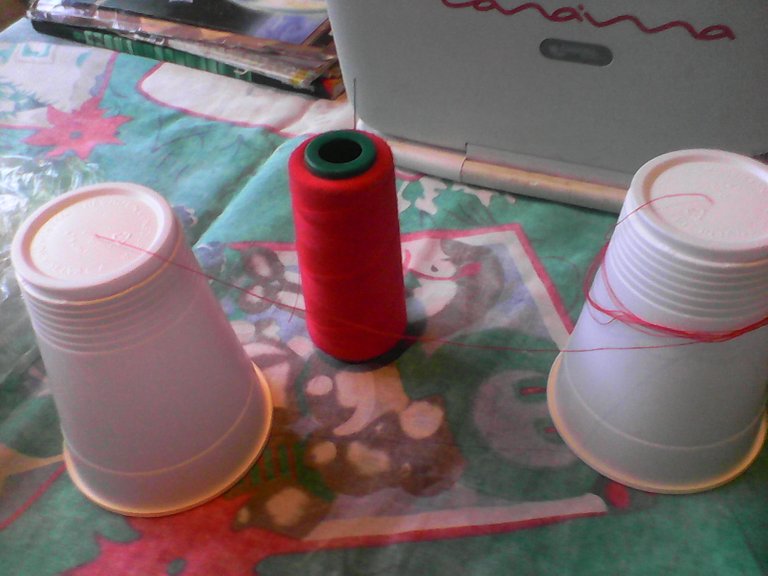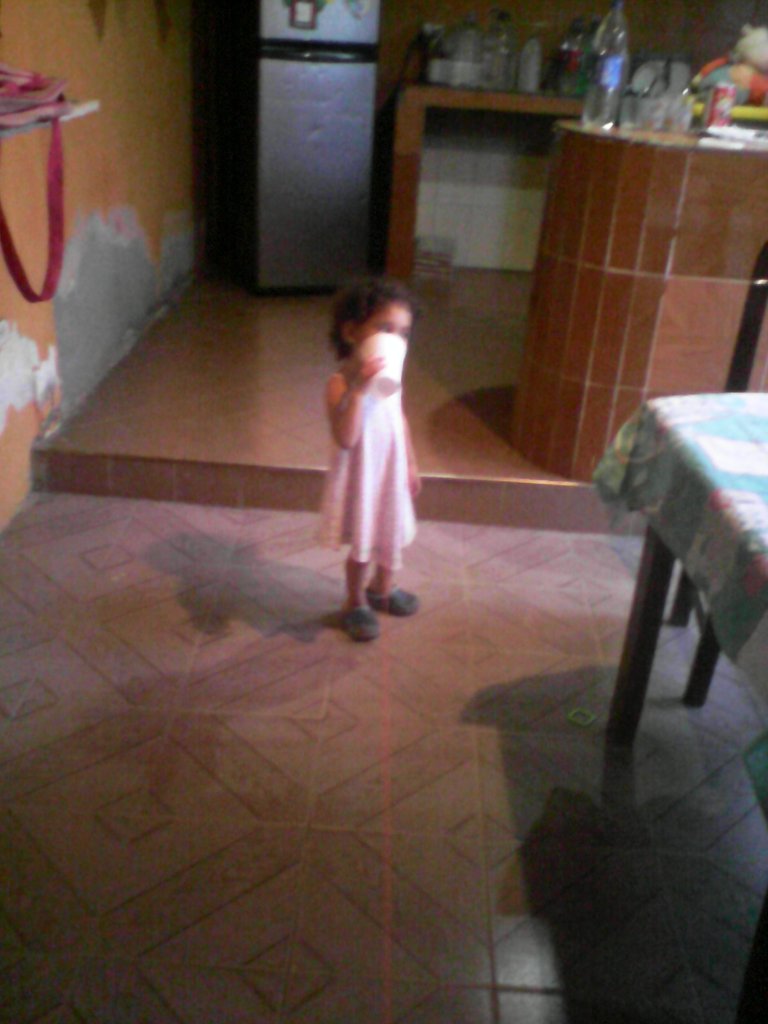Experimentos sobre el Sonido / Sound experiments.

Este tema es de tercer año de educación media, y para mí uno de los más bonitos, que en una ocasión me toco estudiar para trabajar en el aula. (Soy de matemática y terminé dando el área de física).
Esta semana ayude a una estudiante con una serie de experimentos acerca de este tema. Les compartiré lo que hicimos.
Empezando con la primera interrogante que refería a una serie de definiciones acerca del tema.
This subject is a third year of secondary education, and for me one of the most beautiful, that on one occasion I had to study to work in the classroom. (I'm from math and I ended up giving the physics area).
This week I helped a student with a series of experiments on this topic. I will share what we did.
Starting with the first question that referred to a series of definitions on the subject.
Ondas / Waves
Las ondas necesitan de un medio elástico para poder desplazarse, viajan a través de aire, el hierro, el mar etc.
El Sonido: Son ondas sonoras que viajan en el aire hasta el órgano auditivo.
Este tiene dos cualidades timbre y tono.
El timbre es la cualidad por la cual se puede distinguir dos sonidos con la misma frecuencia e intensidad emitidos por diferentes fuentes sonoras.
El tono diferenciar el sonido grave de otro agudo.
Sus propiedades son la reflexión del sonido que consiste en el cambio de dirección que experimenta un movimiento ondulatorio cuando choca con un obstáculo. Y la refracción del sonido consiste en la desviación de la onda cuando este pasa de un medio a otro distinto.
The waves need an elastic medium to be able to move, they travel through air, iron, the sea, etc.
The Sound: They are sound waves that travel in the air to the auditory organ.
This has two timbre and tone qualities.
Timbre is the quality by which two sounds can be distinguished with the same frequency and intensity emitted by different sound sources. The tone differentiates the bass sound from another treble.
Its properties are the reflection of sound that consists of the change of direction that an undulatory movement undergoes when it collides with an obstacle. And the refraction of sound consists of the deviation of the wave when it passes from one medium to another.

Experimento 1: Coloca un pote de mantequilla y cúbrelo con una bolsa d plástico y sujétalo con una liga., coloca una pequeña porción de cristales de azúcar sobre la superficie de plástico que cubre la parte superior del montaje. Golpea con las palmas de tus manos situadas a unos 10 cm de distancia, primero suave y luego con mayor fuerza. ¿Qué observas? Identifica la fuente sonora, el medio elástico y receptor del sonido, ¿en qué membrana del oído el sonido produce un efecto similar al montaje?
Organizamos los materiales a utilizar y proceder a colocar el anvase a 10 cm de donde nos vamos a ubicar.
Experiment 1: Place a pot of butter and cover it with a plastic bag and hold it with a rubber band. Place a small portion of sugar crystals on the plastic surface that covers the top of the assembly. Strike with the palms of your hands about 10 cm apart, first softly and then with greater force. What do you observe? Identify the sound source, the elastic medium and receiver of sound, in which membrane of the ear does sound produce an effect similar to montage?
We organize the materials to use and proceed to place the container 10 cm from where we are going to locate.

Foto de los materiales a utilizar
Experimento
 Monteje listo
Monteje listoCuando aplaudimos suavemente no podemos experimentar cambio alguno que llame nuestra atención. En cambio al aplaudir con fuerza notarás como el azúcar parece saltar en la parte superior del montaje.
Esto sucede porque las ondas sonoras que viajan en el aire viajan hasta el envase y lo hacen vibrar.

El azúcar la colocamos en la parte superior
Identifica: la fuente sonora: Las palmas de tus manos.
El medio elástico: el aire
Receptor del sonido: el envase
¿En qué membrana del oído el sonido produce un efecto similar al montaje?
Las ondas sonoras que viajan hasta el órgano auditivo producen vibraciones en el tímpano.
When we clap softly we cannot experience any changes that catch our attention. On the other hand, when you clap loudly you will notice how the sugar seems to jump at the top of the montage.
This happens because the sound waves that travel in the air travel to the container and make it vibrate.
Identify: the sound source: The palms of your hands.
Elastic medium: air
Sound receiver: the container
On which membrane of the ear does sound produce an effect similar to montage?
The sound waves that travel to the auditory organ produce vibrations in the eardrum.
Experimento 2:
Dispón de dos vasos de plástico y varis metros de hilos de coser, perfora el centro de los vasos. Introduce un hilo por los agujeros y hazle un nudo para que no se salga. Mantén la cuerda tensa y habla por uno de los vasos, mientras que uno de tus familiares escucha por el otro. ¿Qué ocurrió? ¿Cómo se transmite el sonido de un vaso a otro? Afloja la tensión del hilo y continúa hablando. ¿Qué sucedió? Mantén la cuerda tensa y haz que esta toque la pared ¿qué sucede? ¿Por qué?
Experiment 2:
Have two plastic cups and several meters of sewing threads, pierce the center of the cups. Insert a thread through the holes and tie a knot so that it does not come off. Keep the string taut and speak for one of the glasses, while one of your family members listens for the other. What happened? How is the sound transmitted from one glass to another? Loosen the thread tension and continue speaking. What happened? Keep the rope taut and make it touch the wall, what happens? Why?

Materiales

Este experimento lo disfruté mucho porque mi hija menor Miranda me acompañó y participó de él. (Mis fotos son ópacas por lo sencillo de mi celular).
I enjoyed this one very much because my youngest daughter Miranda accompanied me and participated in it. (My photos are opaque due to the simplicity of my cell phone).

Hablando por uno de los vasos
Mi hija podía escuchar todo lo que le decía con uno de los vasos, esto sucede porque las ondas viajaron a través del hilo de coser de un extremo a otro. Esto ocurrirá siempre y cuando el hilo se encuentre tenso.
Podrás notar además que el rozar el hilo con la pared estas ondas se desvían debido a la propiedad de reflexión del sonido.
MY daughter could hear everything I was saying with one of the glasses, this happens because the waves traveled through the sewing thread from one end to the other. This will happen as long as the thread is taut.
You will also notice that by brushing the wire against the wall these waves deviate due to the reflective property of sound.

"Siento que realizar estos experimentos en casa son muy divertivos y despiertan una curiosidad innata en nuestros pequeños, no importa que pienses no estén listos para entender, ellos captan más de lo que podemos imaginar".
¡Felicitaciones!
1. Invierte en el PROYECTO ENTROPÍA y recibe ganancias semanalmente. Entra aquí para más información.
3. Suscríbete a nuestra COMUNIDAD, apoya al trail de @Entropia y así podrás ganar recompensas de curación de forma automática. Entra aquí para más información sobre nuestro trail.
4. Creación de cuentas nuevas de Hive aquí.
5. Visita nuestro canal de Youtube.
Atentamente
El equipo de curación del PROYECTO ENTROPÍA